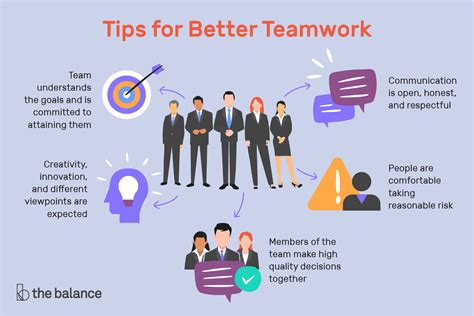Icebreaker Activities to Energize Workshop Participants
Icebreaker activities are a fun and engaging way to kick off a workshop and set a positive tone for the rest of the session. They help participants get to know each other, build rapport, and create a comfortable space for collaboration. Whether you are facilitating a team-building workshop, a training session, or a conference, incorporating icebreaker activities can greatly enhance the overall experience and ensure active participation from all participants.
Here are some effective icebreaker activities to energize workshop participants:
- Two Truths and a Lie: In this activity, each participant shares two true statements about themselves and one false statement. The rest of the group then tries to guess which statement is the lie. This activity not only encourages participants to open up and share personal information but also promotes active listening and observation skills.
- Human Bingo: Create bingo cards with various characteristics or experiences written in each square (e.g., has traveled to more than five countries, can play a musical instrument, speaks more than two languages). Participants then have to mingle and find people who match each characteristic, marking off the corresponding square on their card. This activity promotes networking, encourages conversation, and helps participants find common points of interest.
- Marshmallow Challenge: Divide participants into teams and provide each team with a bag of marshmallows and a stack of spaghetti. Their task is to build the tallest freestanding structure using the marshmallows and spaghetti within a time limit. This activity encourages teamwork, problem-solving, and creativity. It also allows participants to experience the value of collaboration and learning from failures.
Icebreaker activities not only promote a positive and energetic atmosphere but also help participants feel more comfortable and connected to one another. They set the stage for effective collaboration, communication, and participation throughout the workshop. So, the next time you are planning a workshop, consider incorporating these icebreaker activities to energize your participants and create a memorable and engaging experience.
Interactive Team Building Exercises to Foster Trust and Collaboration
Team building exercises are an essential tool for organizations to foster trust and collaboration among team members. These activities not only help to break the ice and create a positive working environment, but also promote effective communication and problem-solving skills. In this blog post, we will explore interactive team building exercises that can be used to strengthen bonds within a team and enhance overall teamwork.
Escape Room Challenge: An escape room challenge is an engaging and exciting team building activity that requires participants to work together to solve puzzles and find clues to escape a locked room within a specific time frame. This exercise allows team members to collaborate, communicate, and think critically under pressure. It promotes trust and collaboration as participants must rely on each other’s strengths and expertise to successfully complete the challenge.
Trust Fall: The trust fall exercise is a classic team building activity that builds trust among team members. In this exercise, participants take turns falling backwards, trusting their colleagues to catch them. This activity not only emphasizes the importance of trust but also encourages effective communication and teamwork. It helps team members to develop a sense of trust and reliance on each other, ultimately fostering a collaborative work environment.
Team Building Olympics: The team building Olympics is a fun and competitive activity that encourages teamwork, problem-solving, and collaboration. This activity involves various team-based challenges and games that require teams to work together to achieve a common goal. The friendly competition and shared experience create a sense of camaraderie among team members, enhancing trust and collaboration in the workplace.
Table:
| Exercise | Purpose |
|---|---|
| Escape Room Challenge | Promotes critical thinking and collaboration |
| Trust Fall | Builds trust and effective communication |
| Team Building Olympics | Encourages teamwork and problem-solving |
These interactive team building exercises are just a few examples of the many activities that can be used to foster trust and collaboration in a team. It is important for organizations to regularly incorporate such exercises into their team development plans to promote effective teamwork and enhance overall performance. By investing time and effort into team building activities, organizations can create a positive and productive work environment where team members trust and support each other.
Communication Workshops: Tools and Techniques for Effective Team Communication
In today’s fast-paced and interconnected business world, effective communication is more important than ever. Teams that can communicate efficiently and clearly are more productive, have higher levels of trust and collaboration, and are better equipped to overcome challenges. That’s why communication workshops are a valuable tool for organizations looking to improve team communication skills. These workshops provide a platform for team members to learn and practice a variety of tools and techniques that can enhance communication within the team and ultimately contribute to the overall success of the organization.
One key tool that is often emphasized in communication workshops is active listening. Active listening involves fully focusing on, understanding, and responding to the speaker. It requires participants to put aside distractions and give their undivided attention. By actively listening, team members can ensure that they genuinely understand the messages being conveyed, which can help avoid misunderstandings and improve overall communication within the team.
Another valuable technique explored in communication workshops is effective questioning. Asking the right questions is essential for gathering information, clarifying understanding, and encouraging active participation from all team members. By asking open-ended questions, team members can stimulate discussion and encourage others to share their thoughts and perspectives. This not only helps to build a deeper understanding of the topic at hand but also fosters a collaborative and inclusive team environment.
Additionally, workshops on effective team communication often explore nonverbal communication cues. Nonverbal cues, such as facial expressions, body language, and tone of voice, can often convey more meaning than words alone. By understanding and utilizing these cues effectively, team members can better interpret and respond to each other’s messages. Communication workshops may include activities that allow participants to practice reading and interpreting nonverbal cues, as well as exercises that encourage them to be mindful of their own nonverbal communication.
In conclusion, communication workshops provide valuable tools and techniques that can enhance team communication in a variety of ways. Through activities focused on active listening, effective questioning, and nonverbal communication cues, team members can improve their ability to understand and convey messages, resulting in more efficient and productive collaboration. By investing in communication workshops, organizations can foster a culture of effective team communication, leading to increased trust, collaboration, and overall success.
Role-Playing Scenarios for Improving Conflict Resolution Skills
Role-playing scenarios can be highly effective in improving conflict resolution skills. Conflict is inevitable in any workplace, and having the ability to resolve conflicts in a healthy and productive manner is essential for maintaining a positive work environment. Role-playing allows participants to step into different perspectives and practice handling conflicts in a controlled setting.
One of the key benefits of using role-playing scenarios is that they provide a safe space for individuals to experiment with different conflict resolution techniques. Participants can try out various approaches and observe the outcomes without the fear of real-life consequences. This experiential learning helps them gain valuable insights into their own communication styles and provides an opportunity for self-reflection.
In a role-playing scenario, participants assume different roles, such as a manager and an employee, or two colleagues with conflicting opinions. They are then given a conflict situation to act out, and they must work through the conflict using effective communication and problem-solving techniques. This interactive approach allows participants to actively engage in the learning process and empowers them to find creative solutions to conflicts.
Using role-playing scenarios for conflict resolution skills also encourages empathy and perspective-taking. When participants step into the shoes of another person, they gain a deeper understanding of their thoughts, feelings, and motivations. This understanding can help foster empathy and promote better communication, as individuals are more likely to approach conflicts with a sense of understanding and compassion.
List of Benefits
- Provides a safe space for practicing conflict resolution techniques
- Allows participants to experiment with different approaches
- Promotes self-reflection and awareness of communication styles
- Encourages active engagement and participation
- Fosters empathy and perspective-taking
- Provides opportunities for creative problem-solving
Table: Sample Role-Playing Scenarios
| Scenario | Roles | Conflict Resolution Techniques |
|---|---|---|
| Disagreement over project priorities | Project manager and team member | Active listening, seeking common ground |
| Conflict between two team members | Colleague A and colleague B | Mediation, finding win-win solutions |
| Conflict with a client | Account manager and client | Assertiveness, negotiation |
Overall, incorporating role-playing scenarios in conflict resolution workshops or training sessions can be highly beneficial. It provides a dynamic and engaging way to enhance conflict resolution skills and promotes a positive and collaborative work environment. Participants can gain practical experience in handling conflicts and develop the necessary skills to navigate challenging situations effectively.
Brainstorming Sessions: Encouraging Creative Thinking and Idea Generation
Brainstorming sessions are a valuable tool in any team or organization, as they encourage creative thinking and idea generation. These sessions provide a platform for team members to collaborate, share their ideas, and collectively solve problems. Brainstorming is an essential part of the creative process, as it allows individuals to think freely and explore new possibilities without judgment or criticism.
During a brainstorming session, participants are encouraged to generate as many ideas as possible, regardless of their feasibility or practicality. This approach helps to create a vibrant and dynamic environment, where team members feel empowered to think outside of the box. The key is to foster an atmosphere of openness and inclusivity, where all ideas are welcomed and valued.
In order to maximize the effectiveness of brainstorming sessions, facilitators can employ various techniques and tools. One popular method is to use divergent thinking, which involves encouraging participants to think expansively and consider multiple perspectives. This approach promotes the exploration of different ideas and increases the chances of discovering innovative solutions.
- Encourage active participation from all team members
- Provide a comfortable and supportive environment
- Set clear goals and objectives for the session
- Use visual aids and props to stimulate creativity
- Appoint a moderator or facilitator to guide the session
| Advantages of Brainstorming Sessions: |
|---|
| Encourages teamwork and collaboration |
| Fosters creativity and innovation |
| Allows for the exploration of different perspectives |
| Promotes problem-solving and decision-making |
| Enhances team communication and engagement |
In conclusion, brainstorming sessions are a powerful tool for encouraging creative thinking and idea generation within teams and organizations. By creating a supportive and inclusive environment, and employing various techniques, facilitators can stimulate the flow of innovative ideas and solutions. These sessions not only foster collaboration and teamwork but also promote the development of critical thinking skills and the ability to think outside of the box. So, the next time you’re looking for fresh ideas or innovative solutions, try organizing a brainstorming session and see the creative energy it unveils.
Feedback and Reflection Activities to Enhance Feedback Skills and Self-awareness
In today’s fast-paced and highly demanding work environment, effective communication and self-awareness play a crucial role in ensuring success and productivity. One way to foster these important skills is through the use of feedback and reflection activities. These activities not only provide team members with valuable insights and constructive criticism but also encourage them to evaluate their own performance and make necessary improvements. In this blog post, we will explore various feedback and reflection activities that can be utilized in workshops to enhance feedback skills and self-awareness.
One popular feedback activity is the “Two Stars and a Wish” technique. In this activity, participants are paired up and each person takes turns providing feedback to their partner. The feedback should include two positive aspects or strengths observed in the partner’s performance (the “two stars”) and one constructive criticism or area for improvement (the “wish”). This activity allows individuals to learn from each other’s strengths and weaknesses, while also promoting a supportive and constructive feedback culture within the team.
Another effective feedback and reflection activity is the “Feedback Sandwich” method. This technique involves providing feedback in a balanced and structured way. The feedback giver starts by offering a positive comment or praise about the individual’s work (the first “slice” of bread). They then provide the constructive criticism or areas for improvement (the “filling” of the sandwich). Finally, they conclude with another positive comment or encouragement (the second “slice” of bread). This activity ensures that constructive feedback is delivered in a supportive and motivating manner, allowing individuals to reflect on their performance and make necessary adjustments.
| Feedback and Reflection Activities | Description |
|---|---|
| Journaling | Encourages individuals to reflect on their thoughts, emotions, and experiences, providing valuable insights for personal and professional growth. |
| Group Discussions | Allows team members to openly share their thoughts and perspectives, creating an environment of mutual learning and understanding. |
| Peer Feedback Circles | Involves small groups of individuals who provide feedback to one another in a structured and supportive manner, promoting growth and self-awareness. |
By incorporating these feedback and reflection activities into workshops, teams can enhance their feedback skills and self-awareness. These activities not only facilitate open and effective communication but also provide individuals with valuable insights for personal and professional growth. Remember, feedback should always be constructive, specific, and focused on behaviors rather than personal attributes. Through continuous practice and implementation of these activities, teams can cultivate a culture of feedback and reflection, leading to improved performance, collaboration, and success.
Gamification in Workshops: Engaging and Motivating Team Members
In today’s fast-paced and competitive work environment, it’s essential to find innovative ways to engage and motivate team members. One effective technique that has gained popularity in recent years is gamification in workshops. By incorporating game elements and mechanics into the workshop setting, facilitators can create an engaging and interactive environment that encourages team members to actively participate and collaborate.
So, what exactly is gamification? Simply put, it’s the application of game design principles and mechanics to non-game contexts. In the case of workshops, gamification involves transforming traditional activities and exercises into a game-like experience, complete with points, levels, challenges, and rewards. By introducing a sense of competition, achievement, and fun, gamification not only captures participants’ attention but also stimulates their intrinsic motivation to perform better.
One of the key benefits of gamification in workshops is that it taps into our innate desire for competition and rewards. When team members are presented with challenges and the opportunity to earn points or badges, it triggers their competitive spirit and drives them to actively participate and excel. This heightened engagement not only enhances their learning experience but also fosters a sense of camaraderie and teamwork.
| Core elements of gamification in workshops: |
|---|
| Points and scoring: Participants earn points for completing activities or achieving specific goals. This provides a measure of progress and creates competition among team members. |
| Levels and progression: Workshops can be structured into different levels or stages, where participants advance as they accumulate points or complete challenges. This sense of progression keeps participants engaged and motivated. |
| Badges and rewards: By awarding badges or rewards for accomplishments, facilitators can add an extra layer of motivation and recognition. These tangible incentives encourage participants to strive for excellence. |
| Team challenges: Gamified workshops often include team-based challenges that require collaboration and cooperation. These activities promote teamwork and improve communication among team members. |
In conclusion, gamification in workshops offers a powerful tool for engaging and motivating team members. By incorporating game elements, facilitators can create a dynamic and interactive environment that stimulates participants’ intrinsic motivation. The competitive spirit, sense of achievement, and enhanced collaboration fostered by gamification ultimately contribute to a more effective and enjoyable learning experience for all team members. So, the next time you conduct a workshop, consider leveraging the power of gamification to unleash the full potential of your team.
Frequently Asked Questions
1. What are some popular icebreaker activities to energize workshop participants?
Some popular icebreaker activities to energize workshop participants include the human knot, name game, two truths and a lie, and scavenger hunt.
2. How can interactive team building exercises foster trust and collaboration?
Interactive team building exercises can foster trust and collaboration by promoting open communication, encouraging team members to work together towards a common goal, and fostering a sense of camaraderie and support within the team.
3. What are some effective tools and techniques for team communication in communication workshops?
Some effective tools and techniques for team communication in communication workshops include active listening, non-verbal communication, assertive communication, and conflict resolution skills.
4. How can role-playing scenarios help improve conflict resolution skills?
Role-playing scenarios can help improve conflict resolution skills by allowing participants to practice handling different conflict situations, exploring different approaches and strategies, and gaining insight into their own communication and negotiation styles.
5. How can brainstorming sessions encourage creative thinking and idea generation?
Brainstorming sessions can encourage creative thinking and idea generation by creating a supportive and non-judgmental environment, allowing participants to freely express their ideas, and encouraging collaboration and building upon each other’s ideas.
6. What are some feedback and reflection activities to enhance feedback skills and self-awareness?
Some feedback and reflection activities to enhance feedback skills and self-awareness include peer feedback exercises, self-assessment questionnaires, journaling or writing reflections, and group discussions on giving and receiving feedback.
7. How can gamification be used in workshops to engage and motivate team members?
Gamification in workshops can be used to engage and motivate team members by incorporating elements of competition, rewards, and challenges into the activities, creating a sense of excitement and achievement, and making learning and participation more enjoyable.





